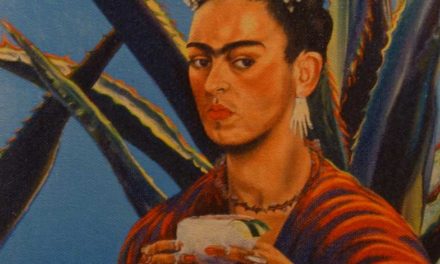Jesus “Toro” Martinez grew up in Laredo in a working class family, the youngest of seven children. He owes much of his early interest in art to his older sister, Herlinda. When Martinez was a young boy, he would accompany Herlinda to her art classes with Amado Peña at Martin High School. Peña, who would emerge as a nationally recognized Latino artist in the late 1980s, taught art in Crystal City and Laredo schools in the early 1970s before moving to Austin and later Santa Fe in the decades that followed.
Martinez enjoyed Peña’s lessons about mixing colors and especially the advice that Peña gave his students on how to make a living as an artist. Years later Peña’s advice resonated for Martinez as he realized that entrepreneurship, such as seeking art commissions, working with art collectives, and applying for state grants would help him survive in the tough and competitive art world.
Martinez left Laredo in 1986 to attend the University of Texas at Austin. The large campus did not suit his needs and he left UT Austin six months after his enrollment. His preference for a smaller art program led him to the San Antonio Art Institute which at the time was located on the ground of the McNay Art Museum. The Art Institute, which closed its doors permanently in 1991, offered at the time a joint BFA degree with Trinity University.
Few Latino art students have the opportunity to study abroad early in their careers: Martinez was the exception. Trinity University offered an education abroad study program at the National Academy of Art in Helsinki that he found ideal for his studies. As part of this degree program, Martinez enrolled his senior year at the National Academy of Art Finland in Helsinki. As a study abroad student, Martinez spent the 1991 year learning new things about painting and visiting museums, opportunities that expanded his appreciation and understanding of art.
Martinez returned to Europe six years later earning a Master of Fine Arts degree from the University of Ravenhurst in Amsterdam in 1999. While studies in Finland and the Netherlands taught him much about Renaissance and modern European art, his visits to Mexico over many years also influenced his style and form. He was inspired by the works of the “Tres Grandes” de Mexico–Diego Rivera, Jose Clemente Orozco, and David Alfaro Siquiros.
Martinez is fond of nature scenes and many of his recent landscapes works are from Texas hill country. The forms that make up his body of work are, in his words, “individual visual statements” designed to show his “creative soul and impact the emotional souls of others.”
The Magical Landscapes of Jesus “Toro” Martinez










